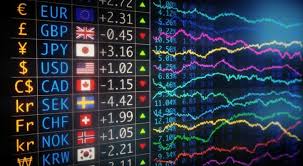
Learn Forex Trading Step by Step
If you are looking to enter the world of forex trading, you have made a wise choice. This market is one of the largest and most liquid financial markets in the world. However, before you jump in, it’s vital to understand the basics. In this guide, we’ll provide you with a step-by-step process to learn forex trading effectively. For additional resources, consider checking out the learn forex trading step by step Best Vietnamese Brokers to find suitable platforms for your trading journey.
Step 1: Understanding Forex Market Basics
The foreign exchange market, also known as forex or FX, is where currencies are traded. It operates 24 hours a day, five days a week, and is decentralized, meaning that it does not have a central exchange. Instead, trading occurs over-the-counter (OTC) between parties, primarily through electronic trading networks. In essence, you are buying one currency while simultaneously selling another.
The Currency Pairs
In forex trading, currencies are traded in pairs, such as EUR/USD (Euro/US Dollar) or GBP/JPY (British Pound/Japanese Yen). The first currency in the pair is the base currency, while the second is the quote currency. Prices in forex represent how much of the quote currency is needed to purchase one unit of the base currency.
Step 2: Learning Key Terminology
Before you start trading, familiarize yourself with important terminology:

- Spread: The difference between the buying and selling price.
- Leverage: Borrowing capital to increase potential returns.
- Lot: The standard unit of measurement for a trade in the forex market. A standard lot is typically 100,000 units of currency.
- Margin: The minimum amount of money needed to open a position.
- Pip: The smallest price move that a given exchange rate can make. Typically, it is the fourth decimal place.
Step 3: Choosing a Trading Style
There are several trading styles, and your choice will depend on your personality, available time, and risk tolerance:
- Scalping: Short-term trading focused on small price movements. Traders hold positions for a few seconds or minutes.
- Day Trading: Traders open and close positions within the same day, avoiding overnight risks.
- Swing Trading: Holding positions for days or weeks, capitalizing on price swings.
- Position Trading: Long-term trading based on fundamental analysis, holding positions for months or years.
Step 4: Developing a Trading Strategy
To successfully trade forex, having a solid trading strategy is essential. It should include clear rules about when to enter and exit trades, the risk management approach, and criteria for selecting trades. Here are some elements to consider:
- Technical Analysis: Using charts and indicators to predict future price movements.
- Fundamental Analysis: Assessing economic indicators, news events, and financial reports.
- Risk Management: Determining how much capital you are willing to risk on each trade.
Step 5: Opening a Trading Account
Once you have a strategy in place, it’s time to open a trading account. Choose a reputable broker that offers the features you need, such as:

- Low spreads and commissions
- A user-friendly trading platform
- Good customer support
- Educational resources
Step 6: Practicing with a Demo Account
Before putting real money on the line, practice your trading skills with a demo account. This allows you to trade with virtual money while getting accustomed to the trading platform and refining your strategy without the fear of losing real capital.
Step 7: Start Trading with Real Money
After gaining confidence through practice, you may consider opening a live trading account. Start with a small amount of capital and gradually increase your investment as you become more comfortable with the market. Remember that emotional discipline is critical when trading with real funds, as greed and fear can lead to impulsive decisions.
Step 8: Continuous Learning
The forex market is constantly evolving, and it’s essential to keep up-to-date with market trends, economic news, and changes in trading technology. Attend webinars, read books, and follow financial news to continue developing your trading skills.
Conclusion
Learning forex trading step by step is crucial for success in this challenging market. By understanding the basics, familiarizing yourself with key terminology, choosing a trading style, developing a strategy, and practicing diligently, you’ll be well-equipped to navigate the world of forex trading. Remember that trading requires discipline, patience, and a willingness to learn from both successes and failures.

